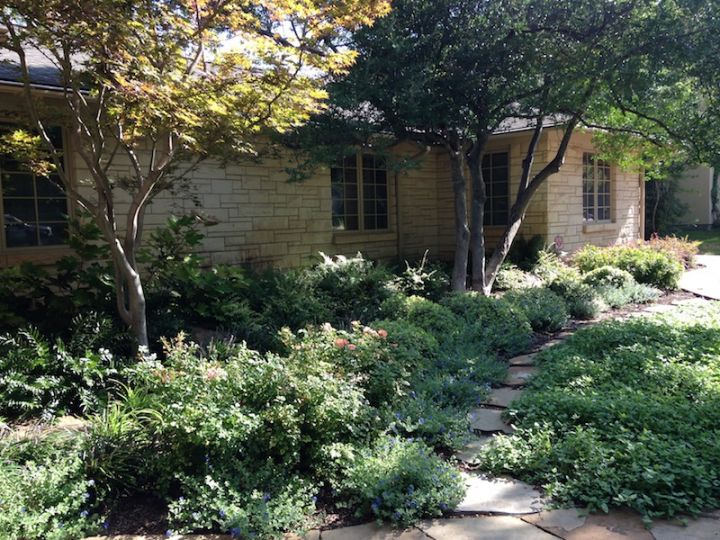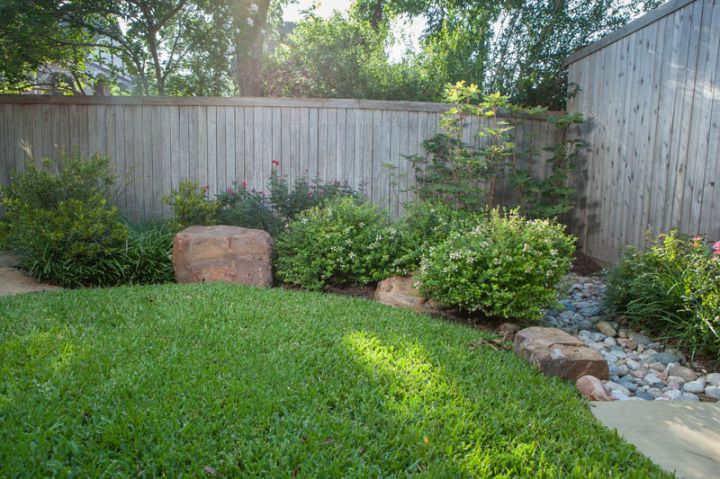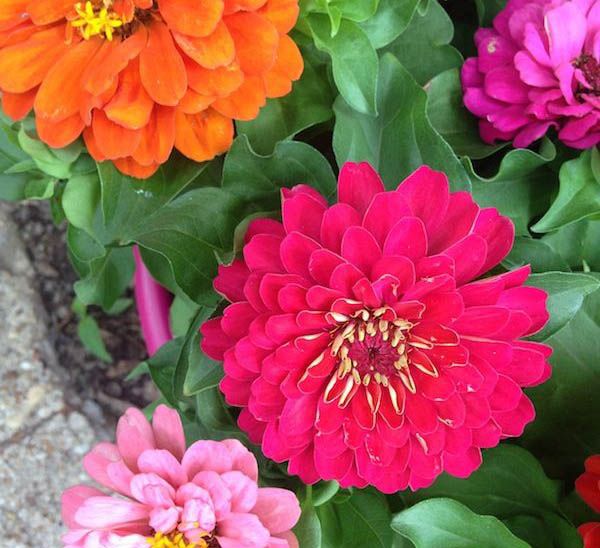Pro-tips for Watering Summer Landscapes
June 21, 2016 | By webadmin
Watering your lawn and landscape the right way may seem like an easy; but it often turns out to be a lot more complicated than you might think. Not only do we struggle with an extreme climate, but our weather is unpredictable and can change on a dime. Weather that was once cool and rainy can turn blistering hot overnight. Plants that were once soggy can dry out completely before you’ve even realized it. Most importantly, the different types of plants in your landscape, be it your trees or the lawn, each have different water needs.
Why does it get so tough to keep plants healthy in summer? Well, you know it’s hot...really hot. But it’s not just the daytime temperatures that make summer landscape maintenance tricky; it’s the nighttime temperatures. In the heat of summer in Dallas, night temperatures often don’t come down and can linger close to 100F degrees. Typically at night, when temperatures cool, plants transpire less (or “breathe”, losing water through their leaves to the air). When night temperatures stay hot, plants continue to lose moisture all night - they never get a break!
Trees
Often forgotten once established, large trees will need additional water that your irrigation schedule alone typically does not provide. Even species that are drought tolerant may still need some extra help in summer. A slow, deep watering once a week is helpful for trees in during the hot summer. Adding soaker hoses or a bubbler around the base of your trees will help keep them healthy during the summer months. Drip systems are the perfect way to slowly and deeply water trees. Adequate watering keeps nutrients flowing, encourages new growth, and is important for the root structure of the tree. Add Gator Bags to newly planted trees.

Lawn
It’s a commonly accepted myth that if you water your lawn more often, it will grow healthier. Sounds logical, right? Actually, that kind of watering can get you in trouble when it comes to lawn care. Short bursts of watering, say 5-10 minutes, applied 3 or 4 times per week will only result in a lawn with a shallow and weak root system. Your goal is to get roots to grow deeper and stronger, so that your lawn can better withstand stresses. To do that, you need to water infrequently, but deeply. A longer, deeper watering once per week is best for an established lawn.

You might be watering in short bouts because you’re experiencing runoff in your landscape. Runoff can occur when soil is compacted and water can’t penetrate the soil quickly enough; so, it pools on the surface or runs off the property. Aerating your lawn each year, adding organic matter to the soil, and fertilizing at the right time will improve moisture retention, reduce runoff and cut down on potential fungal diseases and pests. The cycle and soak method is a great way to reduce runoff and improve water absorption. This method allows you to run your system for a shorter period of time, shutting it off to allow the water to soak in, then running it again for a second watering that saturates more deeply.
Shrub & Color Beds
Your shrub beds will need to be watered separately from your lawn zones and typically require less frequent watering, albeit deep watering. Drip irrigation is an excellent option for foundation shrub plantings. However, areas planted with annual color or edibles will need more frequent watering to stay alive. Drip irrigation alone may not do the trick. Supplementing moisture with hand watering during the hottest months may be necessary for your annuals, or you may consider adding some additional micro-sprays to provide them some extra coverage. Plant heat tolerant color such as zinnias, marigolds, purslane, pentas, coleus, esperanza, scaevola, and lantana to beat the summer heat.

Zinnias are easy to plant by seed or transplant and offer heat hardy color through summer.
Containers
In the heat of the summer you might find that you are watering your pots daily. Using potting soil high in organic material is best for moisture retention and don’t forget to topdress with mulch. Adding drip irrigation to pots is a great way to reduce the amount of hand watering needed, especially if you are leaving town for the summer months. We can link them up to your existing irrigation system.
Mulch
Adding mulch to garden beds, at the base of trees and shrubs, and topdressing containers not only conserves moisture in the soil, but it also suppresses weeds, regulates soil temperatures to protect roots, and gives the landscape a tidy and finished look.
Now sure your irrigation system is up-to-snuff for summer? Have it audited by a licensed irrigation technician annually. Your landscape changes regularly and additional heads or adjustments may be needed to support growth in your landscape. Curious to learn how to step up your irrigation game? Consider installing a Smart Controller for more accurate hydration you can control from anywhere in the country on your Smartphone.
